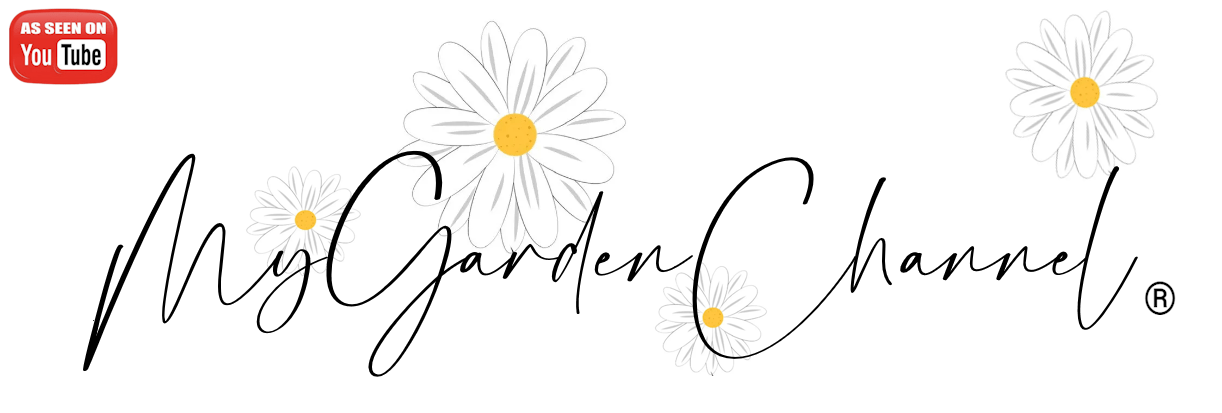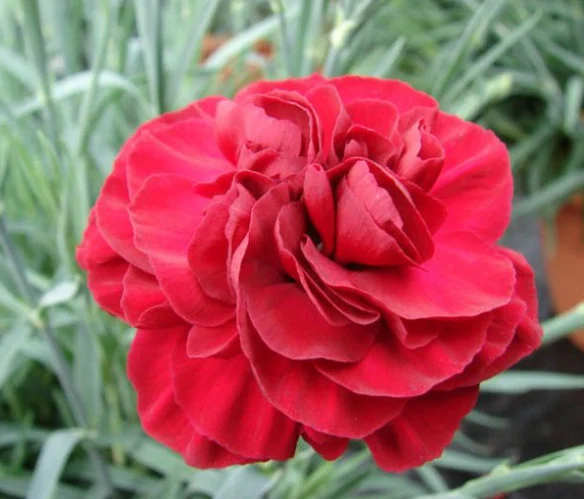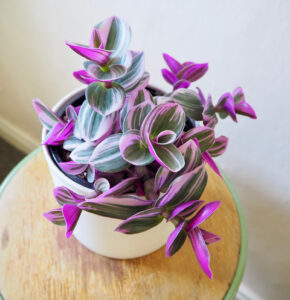The red carnation, scientifically known as Dianthus caryophyllus, is a timeless and classic flower cherished for its bold color, ruffled petals, and long-lasting blooms. Known for their symbolism of love, admiration, and distinction, red carnations are widely used in gardens, floral arrangements, and as potted plants.
Native to the Mediterranean region, carnations are easy to grow and maintain, making them a favorite among both novice and experienced gardeners. This guide covers all essential aspects of red carnation care to help ensure healthy growth and beautiful blooms.
Overview of Red Carnation (Dianthus caryophyllus)
- Common Name: Red Carnation
- Botanical Name: Dianthus caryophyllus
- Family: Caryophyllaceae
- Type: Herbaceous perennial (often grown as annual or biennial in cooler climates)
- Height: 12 to 24 inches
- Spread: 10 to 18 inches
- Bloom Time: Late spring through summer; can bloom year-round in ideal conditions
- USDA Hardiness Zones: 5 to 9 (varies by cultivar)
1. Light Requirements
Red carnations require ample sunlight to thrive and produce abundant blooms.
- Optimal Light: Full sun (at least 6 hours of direct sunlight per day)
- Partial Shade: Tolerated in very hot climates, especially during peak afternoon heat
Inadequate sunlight may result in fewer blooms and leggy growth.
2. Soil Requirements
Proper soil conditions are crucial for the health and longevity of carnations.
- Soil Type: Well-draining, loamy soil
- Soil pH: Neutral to slightly alkaline (6.7 to 7.5)
- Amendments: Add organic matter like compost to enrich poor soil; avoid heavy clay
Good drainage is especially important to prevent root rot and fungal diseases.
3. Watering Needs
Watering should be consistent but moderate to support healthy root development and flowering.
- Frequency: Water when the top inch of soil feels dry
- Young Plants: Keep soil slightly moist until established
- Established Plants: Water deeply but infrequently; allow soil to dry slightly between watering
- Overwatering Risk: Avoid soggy conditions, which can lead to root rot and mildew
Drip irrigation or watering at the base helps keep the foliage dry and minimizes disease.
4. Temperature and Humidity
Carnations prefer temperate climates and do not tolerate extreme heat or cold well.
- Ideal Temperature Range: 50°F to 75°F (10°C to 24°C)
- Cold Tolerance: Hardy down to 20°F (-6°C) in some varieties, but protection is advised in colder regions
- Heat Sensitivity: May wilt or slow blooming in prolonged heat above 85°F (29°C)
- Humidity: Moderate; avoid excessive humidity to prevent fungal issues
In cooler zones, consider mulching or bringing container plants indoors during winter.
5. Fertilizing
Fertilizing red carnations promotes strong growth and abundant flowering.
- Type: Balanced, slow-release fertilizer (10-10-10 or 5-10-5)
- Frequency: Once a month during active growing and blooming seasons
- Organic Options: Compost tea or fish emulsion can provide nutrients with less risk of buildup
Avoid over-fertilizing, as too much nitrogen can lead to lush foliage but fewer flowers.
6. Pruning and Deadheading
Pruning and deadheading improve plant shape, extend the blooming period, and reduce the risk of disease.
- Deadheading: Remove spent flowers promptly to encourage more blooms
- Trimming: Lightly cut back stems to maintain shape and promote branching
- End-of-Season Pruning: Cut back plants in fall after the final bloom, especially in colder zones
Regular grooming keeps the plant looking tidy and prevents self-seeding if not desired.
7. Planting and Spacing
Proper spacing ensures good air circulation, reducing the risk of disease and allowing room for growth.
- Planting Time: Early spring after the last frost or in late summer in mild climates
- Spacing: 10 to 18 inches apart, depending on the variety
- Depth: Plant at the same depth as the container or nursery plant
Avoid overcrowding to reduce competition for light and nutrients.
8. Container Growing
Red carnations adapt well to container life and can be grown on patios, balconies, or indoors with proper light.
- Pot Size: Minimum 8-inch diameter with drainage holes
- Soil Mix: Use a light, well-draining potting mix
- Watering: Monitor closely, as containers dry out faster than garden beds
- Repotting: Refresh soil or move to a larger container every 1–2 years
Move pots indoors during winter in frost-prone areas to prolong the plant’s life.
9. Propagation
Carnations can be propagated through seeds, cuttings, or division.
From Cuttings:
- Take a 4 to 6-inch cutting from a healthy, non-flowering stem
- Remove lower leaves and dip the cut end in rooting hormone
- Plant in moist potting soil or perlite
- Keep in a warm, bright area with indirect sunlight
- Roots typically develop within 3 to 4 weeks
From Seeds:
- Sow indoors 6 to 8 weeks before the last frost
- Transplant after seedlings have at least two sets of true leaves
Seeds can take longer to flower, especially in cooler climates.
10. Pests and Diseases
Red carnations are fairly resistant but may face occasional pest or disease issues, particularly in humid conditions or poor air circulation.
Common Pests:
- Aphids
- Thrips
- Spider mites
- Leafhoppers
Use insecticidal soap or neem oil to control infestations early.
Common Diseases:
- Fusarium wilt
- Rust
- Botrytis (gray mold)
- Crown rot
Ensure proper spacing, good drainage, and avoid wetting the leaves to minimize disease.
11. Blooming and Longevity
Red carnations bloom from late spring through summer and can bloom longer with regular care.
- Lifespan: Perennials can live for 2 to 3 years or longer under ideal conditions
- Cut Flowers: Carnations are one of the longest-lasting cut flowers, often staying fresh for two weeks or more in water
To extend bloom life, keep flowers cool and out of direct sunlight.
12. Symbolism and Uses
Red carnations carry rich symbolism and are popular in floral arrangements, corsages, and symbolic ceremonies.
- Symbolism: Love, admiration, respect, and deep affection
- Uses: Weddings, Valentine’s Day, funerals, Mother’s Day, patriotic displays
The long-lasting nature and vibrant color make red carnations a meaningful and practical choice for many occasions.
Final Thoughts
Red carnations are versatile, striking, and relatively easy to care for. Whether planted in a garden bed, pot, or floral arrangement, they bring elegance and color to any setting. With full sun, proper drainage, moderate watering, and occasional feeding, Dianthus caryophyllus will reward you with abundant, vivid blooms throughout the season.


